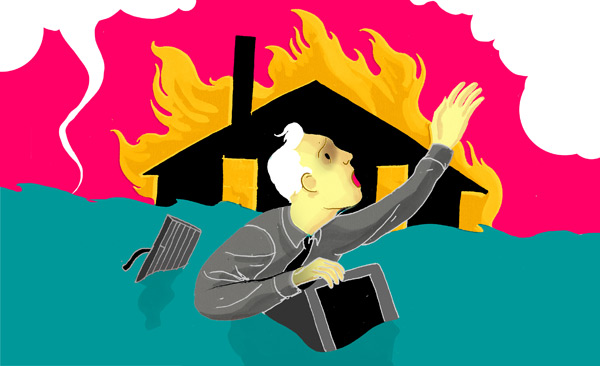 Physorg | Charles Kolb, Ph.D., reports that the concept of urban metabolism has existed for decades. It views large cities as living entities that consume energy, food, water, and other raw materials, and release wastes. The releases include carbon dioxide, the main greenhouse gas; air pollutants, sewage and other water pollutants; and even excess heat that collects in vast expanses of concrete pavement and stone buildings. Humans directly produce a significant share of this waste, but emissions from industrial, power generation and transportation systems respire the largest quantities of greenhouse gases and other air pollutants. Other urban metabolizers include sewage systems, landfills, domestic pets and pests like rats, which in some cities outnumber people.
Physorg | Charles Kolb, Ph.D., reports that the concept of urban metabolism has existed for decades. It views large cities as living entities that consume energy, food, water, and other raw materials, and release wastes. The releases include carbon dioxide, the main greenhouse gas; air pollutants, sewage and other water pollutants; and even excess heat that collects in vast expanses of concrete pavement and stone buildings. Humans directly produce a significant share of this waste, but emissions from industrial, power generation and transportation systems respire the largest quantities of greenhouse gases and other air pollutants. Other urban metabolizers include sewage systems, landfills, domestic pets and pests like rats, which in some cities outnumber people.During the last five years, this body of knowledge has drawn into sharper focus the hazards of poor air quality in megacities, not just on the large local populations but also on population centers, agricultural activities and natural ecosystems located downwind from these sprawling areas, Kolb said. He is with the Center for Atmospheric and Environmental Chemistry and the Center for Aerosol and Cloud Chemistry of Aerodyne Research Inc. in Billerica, Mass.
"Carbon dioxide and other pollutants in megacities make them immense drivers of climate change," he said. "They impact climate on both a regional and global level because these long-lived greenhouse gases are dispersed around the world."
More than half the world's population today lives in cities, and the world's largest urban areas are growing rapidly. The number of megacities — metropolitan areas with populations exceeding 10 million — has grown from just three in 1975 to about 20 today.
Kolb said that the most highly polluted megacities are in developing countries. They include Dhaka, Bangladesh; Cairo, Egypt; and Karachi, Pakistan. Some megacities in less developed regions have recently mounted air quality management campaigns that have resulted in lower levels of pollution; they include Mexico City, Mexico; Beijing, China; Sao Paulo, Brazil; and Buenos Aires, Argentina. Even the cleanest megacities like Tokyo/Osaka in Japan and New York City and Los Angeles in the United States — all in the developed world — still have serious problems, Kolb said.






